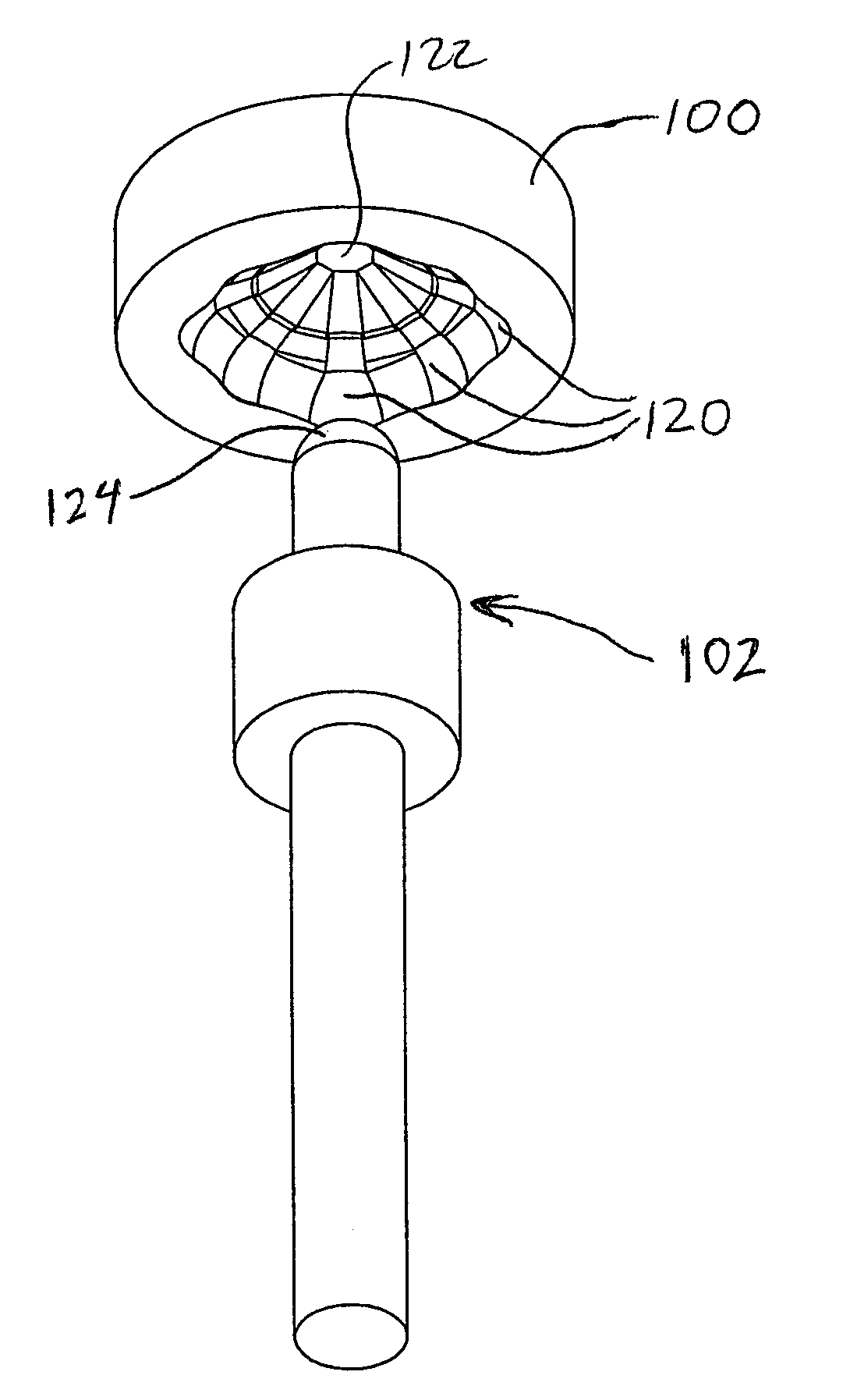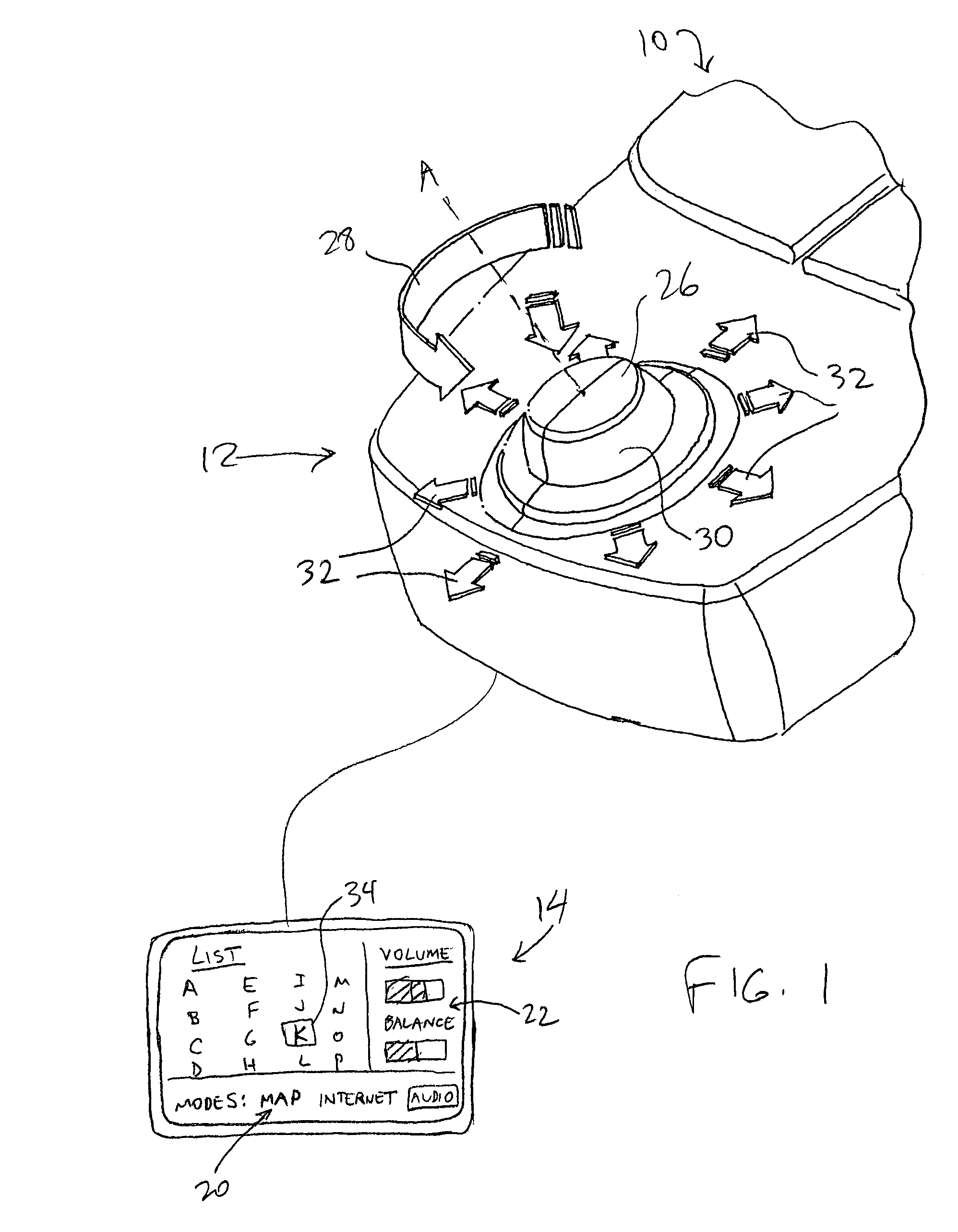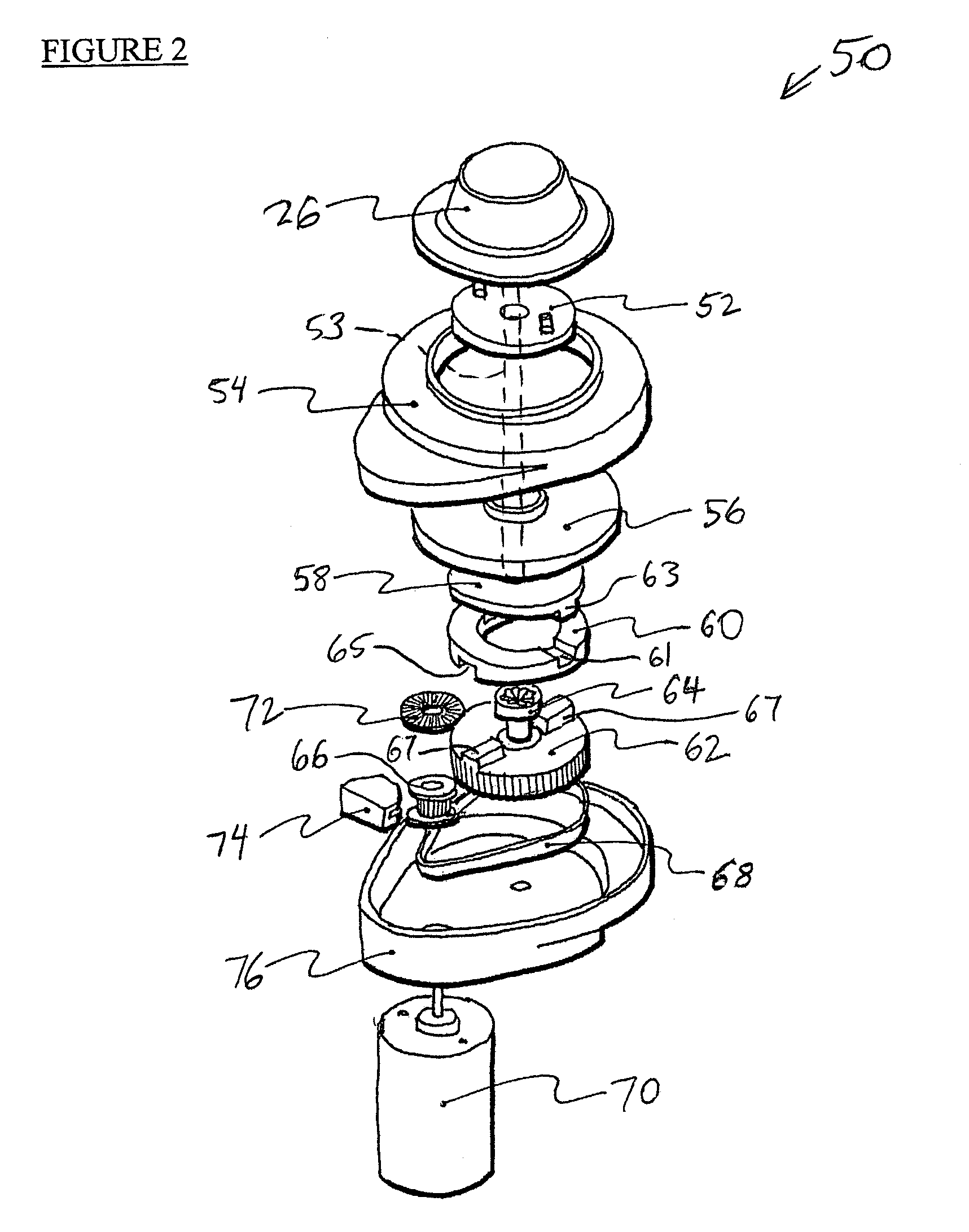Mechanisms for control knobs and other interface devices
a technology of mechanical knobs and interface devices, applied in the direction of electrical haptic/tactile feedback, instruments, computing, etc., can solve the problems of limited control options of users, limited rotary and/or push-pull knobs, and limited touch of mechanical knobs
- Summary
- Abstract
- Description
- Claims
- Application Information
AI Technical Summary
Benefits of technology
Problems solved by technology
Method used
Image
Examples
embodiment 50
[0048]Other advantages of the embodiment 50 include a high holding torque, very scalable mechanical design, a smaller / less expensive actuator due to the use of transmission amplification, and improved encoder resolution due to the drive transmission amplification. There are some disadvantages as well: the mechanism requires significant depth in a housing to house it; there is friction inherent in the belt transmission; the drive transmission increases the device's complexity; and more joints in the moving parts result in greater backlash in the device. Furthermore, this embodiment is not as suitable for the axial-moving motor shaft invention described herein as other embodiments.
[0049]In another alternate embodiment, one or more of the transverse or lateral motions of knob 26 can be actuated. For example, a linear or rotary actuator can be provided to output forces in the transverse degree of freedom, in one or both directions (toward the center position and away from the center pos...
embodiment 230
[0084]Spring 280 also allows rotational motion to be transmitted between shaft 278 and shaft 274 (and thus the knob 26 and gear 276). Spring 280 is preferably rigid in a circumferential direction and does not allow torsion flex, so that rotation of shaft 278 by actuator 282 (discussed below) is transmitted as faithfully as possible to shaft 274 and knob 26 without excessive play or compliance. Helical or other types of springs, or other couplings that allow translation and can transmit rotation, such as a bellows, a helical flexible coupling, or a splined shaft inside of a splined cavity, can be used for spring 280. In still other embodiments, no spring 280 or other coupling is provided, and shaft 278 is instead able to be moved axially with respect to the motor to allow knob axial motion, as in the embodiment 230 shown above in FIG. 6. In alternate embodiments, the motion along axis Z can be actuated by using an actuator to output forces in the linear degree of freedom, such as a l...
PUM
 Login to View More
Login to View More Abstract
Description
Claims
Application Information
 Login to View More
Login to View More - R&D
- Intellectual Property
- Life Sciences
- Materials
- Tech Scout
- Unparalleled Data Quality
- Higher Quality Content
- 60% Fewer Hallucinations
Browse by: Latest US Patents, China's latest patents, Technical Efficacy Thesaurus, Application Domain, Technology Topic, Popular Technical Reports.
© 2025 PatSnap. All rights reserved.Legal|Privacy policy|Modern Slavery Act Transparency Statement|Sitemap|About US| Contact US: help@patsnap.com



